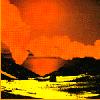 After unveiling their unique brand of instrumental heaviness on lastyear's untitled EP, Pelican nudge things one step further with this,their first full-length release. Australasia is that fictional landmass which, along with the Americas and Great Britain, comprises theempire of Oceania in George Orwell's 1984. Pelican create a similar topography of impending dystopia with the dark, crushing riffs of their Australasia. Pelican unashamedly summon the spirits of Black Sabbath, Master of Puppets-eraMetallica and The Melvins, creating a six track album of surprisingdynamism and complexity. Every track uses the same simple sonicpalette: heroic minor-key riffing interwoven with layers of crunchy,expansive rhythm guitar. Their long-form compositions take each themethrough several dramatic tempo changes, allowing them the chance torevisit certain key themes and gain momentum with each repetition.Pelican are instrumentalists of the highest order; their guitarsymphonies are so incredibly lyrical that vocals would be animposition. Comparisons to post-rockers Explosions in the Sky might beappropriate, but Pelican aren't interested in delayed gratification.They cut out all of the chamber-ensemble warm-up and dive in headfirst,barreling forward on their own intense propulsion. "Nightendday"imagines a sky filled with smokestacks and searchlights, a brutaldictatorial regime where the only escape is to rock as fully and ashard as possible, breaking through the barbed-wired borders of tyranny."Angel Tears" is absolutely stunning, a sweeping, cinematic dirgeimbued with a driving rhythm section that keeps threatening to upenditself, but miraculously manages to stay on track. Track five, which ispurposely left untitled, is the album's sole respite: an hauntinglybeautiful symphony of interlacing acoustic guitars with subtlesynthesizer flourishes. It's Pelican's answer to the heavy metal powerballad. The album ends on a high note, with the monolithic 11-minutetitle track, full of fuzzy, cyclical riffage so massive, at highvolumes on headphones it threatens to deepen the fissure of my brain.Calling this "stoner metal" would be a disservice to the precision andaccuracy with which the foursome deploy their arsenal. Australasia is a substantial album, but it nonetheless leaves me with a desire to hear more.
After unveiling their unique brand of instrumental heaviness on lastyear's untitled EP, Pelican nudge things one step further with this,their first full-length release. Australasia is that fictional landmass which, along with the Americas and Great Britain, comprises theempire of Oceania in George Orwell's 1984. Pelican create a similar topography of impending dystopia with the dark, crushing riffs of their Australasia. Pelican unashamedly summon the spirits of Black Sabbath, Master of Puppets-eraMetallica and The Melvins, creating a six track album of surprisingdynamism and complexity. Every track uses the same simple sonicpalette: heroic minor-key riffing interwoven with layers of crunchy,expansive rhythm guitar. Their long-form compositions take each themethrough several dramatic tempo changes, allowing them the chance torevisit certain key themes and gain momentum with each repetition.Pelican are instrumentalists of the highest order; their guitarsymphonies are so incredibly lyrical that vocals would be animposition. Comparisons to post-rockers Explosions in the Sky might beappropriate, but Pelican aren't interested in delayed gratification.They cut out all of the chamber-ensemble warm-up and dive in headfirst,barreling forward on their own intense propulsion. "Nightendday"imagines a sky filled with smokestacks and searchlights, a brutaldictatorial regime where the only escape is to rock as fully and ashard as possible, breaking through the barbed-wired borders of tyranny."Angel Tears" is absolutely stunning, a sweeping, cinematic dirgeimbued with a driving rhythm section that keeps threatening to upenditself, but miraculously manages to stay on track. Track five, which ispurposely left untitled, is the album's sole respite: an hauntinglybeautiful symphony of interlacing acoustic guitars with subtlesynthesizer flourishes. It's Pelican's answer to the heavy metal powerballad. The album ends on a high note, with the monolithic 11-minutetitle track, full of fuzzy, cyclical riffage so massive, at highvolumes on headphones it threatens to deepen the fissure of my brain.Calling this "stoner metal" would be a disservice to the precision andaccuracy with which the foursome deploy their arsenal. Australasia is a substantial album, but it nonetheless leaves me with a desire to hear more.
Two new shows just for you. We have squeezed out two extended release episodes for this weekend to get you through this week. They contain mostly new songs but there's also new issues from the vaults. The first show features music from Rider/Horse, Mint Field, Robert Aiki Aubrey Lowe, Anastasia Coope, ISAN, Stone Music, La Securite, Bark Psychosis, Jon Rose, Master Wilburn Burchette, Umberto, Wand, Tim Koh, Sun An, and Memory Drawings. The second episode has music by Laibach, Melt-Banana, Chuck Johnson, X, K. Yoshimatsu, Dorothy Carter, Pavel Milyakov, Violence Gratuite, Mark Templeton, Dummy, Endon, body / negative, Midwife, Alberto Boccardi, Divine. Cow in Maui from Veronika in Vienna. Get involved: subscribe, review, rate, share with your friends, send images! |



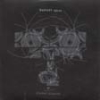 The electronic and live instrumentation mixing duo of Adrian Corker andPaul Conboy have recently been writing the next Bomb the Bass albumwith Tim Simenon. Ahead of that, Corker/Conboy's Radiant Idiotis a dark obsession with minor chords that transforms their music intoa beautiful new creature with a life all its own. Their sophomore setis a true renovation of their formerly derivative sound with intriguingadditions and finer melodies. The electronics are more an atmospherictouch than an active participant, and with new instruments joining thegroup's repertoire, the possibilities are endless. Shutters anddelicate guitar open the record, and soon hefty live drums and a lowmuddy bass join in, and the guitar and the song go all filthy energy. Afull-on freak-out ensues, reminding me vaguely of the new direction ofPele, and suddenly I'm eager for more. There's a drive, an urgencypresent, on these songs that may have been there before, but never thisovert, and it's a breath of fresh air. The music is still so structuredand controlled in its fluidity, like every move is planned, but I coulddefinitely tell that these two were taking chances this time around.The slow groove of "Portland Grove Am" is simply lovely and comforting,with a simple repeated melody and layered stringed instruments overtop.Interesting guest contributions rear their heads here and there, likeIan Dixon's pulse-quickening trumpet work on "Get 1 Over." Changingrhythms also bring a freshness: a shuffle here and a dirge there with alittle bit of a groove in between creates a great make-out record, withshifts in tempo bringing peaks and valleys in the action. Strangely,the only track that didn't do anything for me is the title track, alsothe longest at just over eight minutes. It moves like a symphony,gracefully sliding in and out of different phases, but it reallydoesn't get where it feels like it's going. Still, the generalexperience of the album is a pleasing one, and a real evolution fromtheir previous efforts.
The electronic and live instrumentation mixing duo of Adrian Corker andPaul Conboy have recently been writing the next Bomb the Bass albumwith Tim Simenon. Ahead of that, Corker/Conboy's Radiant Idiotis a dark obsession with minor chords that transforms their music intoa beautiful new creature with a life all its own. Their sophomore setis a true renovation of their formerly derivative sound with intriguingadditions and finer melodies. The electronics are more an atmospherictouch than an active participant, and with new instruments joining thegroup's repertoire, the possibilities are endless. Shutters anddelicate guitar open the record, and soon hefty live drums and a lowmuddy bass join in, and the guitar and the song go all filthy energy. Afull-on freak-out ensues, reminding me vaguely of the new direction ofPele, and suddenly I'm eager for more. There's a drive, an urgencypresent, on these songs that may have been there before, but never thisovert, and it's a breath of fresh air. The music is still so structuredand controlled in its fluidity, like every move is planned, but I coulddefinitely tell that these two were taking chances this time around.The slow groove of "Portland Grove Am" is simply lovely and comforting,with a simple repeated melody and layered stringed instruments overtop.Interesting guest contributions rear their heads here and there, likeIan Dixon's pulse-quickening trumpet work on "Get 1 Over." Changingrhythms also bring a freshness: a shuffle here and a dirge there with alittle bit of a groove in between creates a great make-out record, withshifts in tempo bringing peaks and valleys in the action. Strangely,the only track that didn't do anything for me is the title track, alsothe longest at just over eight minutes. It moves like a symphony,gracefully sliding in and out of different phases, but it reallydoesn't get where it feels like it's going. Still, the generalexperience of the album is a pleasing one, and a real evolution fromtheir previous efforts. The most recent in an avalanche of new music taking a crack at resurrecting the dreamy, shoegazer pop of bands like My Bloody Valentine, Slowdive and Ride, Pluramon's Dreams Top Rock only distinguishes itself from the rest of the pack by not being quite as predictable. It helps that Marcus Schmickler has recruited Julee Cruise—the serene, childlike chanteuse of so many David Lynch soundtracks—to contribute vocals to the album. Julee's last album, the dreadful The Art of Being a Girl, was such a wasted opportunity that it's a pleasure to hear her placed in the hands of a producer who can wield her peculiar vocal talents properly.
The most recent in an avalanche of new music taking a crack at resurrecting the dreamy, shoegazer pop of bands like My Bloody Valentine, Slowdive and Ride, Pluramon's Dreams Top Rock only distinguishes itself from the rest of the pack by not being quite as predictable. It helps that Marcus Schmickler has recruited Julee Cruise—the serene, childlike chanteuse of so many David Lynch soundtracks—to contribute vocals to the album. Julee's last album, the dreadful The Art of Being a Girl, was such a wasted opportunity that it's a pleasure to hear her placed in the hands of a producer who can wield her peculiar vocal talents properly.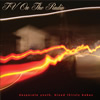 Young Liars, released this past summer, was an intoxicating shotof dark, precise sound; at once both deeply passionate and eerilychilly, the product of a gospel choral that had lost its way andpreferred to creep out unsuspecting subway riders rather than bask inany holy warmth. While that EP showcased a few densely packed tracks,their new LP finds that intensity strung across a larger canvas,changing the shape and color into something that asks for more patienceand observation. "The Wrong Way" is a charmer, thudding along withsoupy bass and percussion as baritone and alto saxophones bleat andsupport the vocal harmonies of the three members, which sound like asnapping ragtime chorus, full bodied and drawling. Though the musicalfoundation is simple and loopy, it serves as a perfect background forthe expressive vocals that rise and fall with bursts of energy, beggingfor the pews to raise their hands and chime in. "Ambulance" eschews anykind of pretense that Tunde Adebimpe's vocals are not the core of thisband's power, dropping the fuzzy noise collages for an acapellaexcursion. Adebimpe's breathy triplets on the song's chorus of "I /will be / your / ac / ci / dent / if you / will be / my am / bu /lance," caress every syllable, giving them each proper considerationbefore spilling them out in his smooth baritone. Unfortunately, theslower tracks, like "Don't Love You," lack the amorphous, ephemeralquality that made "Blind" from their past EP such a spooky, alluringlisten. Where before a lurch was arresting, visceral, here they areclumsy and cautious. "Poppy" suffers from a relatively banal guitarriff that comprises the bulk of the track. While this is hardly enoughto invalidate any interest in Desperate Youth, Bloodthirsty Babes,it is indicative that the group finds themselves searching for the nextstep, the next mode for their sound. "Bomb Yourself" finds thosebrilliant harmonies sprawling across a bass heavy, dub-inflected bed,capturing a deep groove. The raw quality of TV on the Radio's energy,and their recklessly experimental tendencies make listening to everynook and cranny of their tinkered sound interesting, and hints at evenmore dramatic pieces in the future.
Young Liars, released this past summer, was an intoxicating shotof dark, precise sound; at once both deeply passionate and eerilychilly, the product of a gospel choral that had lost its way andpreferred to creep out unsuspecting subway riders rather than bask inany holy warmth. While that EP showcased a few densely packed tracks,their new LP finds that intensity strung across a larger canvas,changing the shape and color into something that asks for more patienceand observation. "The Wrong Way" is a charmer, thudding along withsoupy bass and percussion as baritone and alto saxophones bleat andsupport the vocal harmonies of the three members, which sound like asnapping ragtime chorus, full bodied and drawling. Though the musicalfoundation is simple and loopy, it serves as a perfect background forthe expressive vocals that rise and fall with bursts of energy, beggingfor the pews to raise their hands and chime in. "Ambulance" eschews anykind of pretense that Tunde Adebimpe's vocals are not the core of thisband's power, dropping the fuzzy noise collages for an acapellaexcursion. Adebimpe's breathy triplets on the song's chorus of "I /will be / your / ac / ci / dent / if you / will be / my am / bu /lance," caress every syllable, giving them each proper considerationbefore spilling them out in his smooth baritone. Unfortunately, theslower tracks, like "Don't Love You," lack the amorphous, ephemeralquality that made "Blind" from their past EP such a spooky, alluringlisten. Where before a lurch was arresting, visceral, here they areclumsy and cautious. "Poppy" suffers from a relatively banal guitarriff that comprises the bulk of the track. While this is hardly enoughto invalidate any interest in Desperate Youth, Bloodthirsty Babes,it is indicative that the group finds themselves searching for the nextstep, the next mode for their sound. "Bomb Yourself" finds thosebrilliant harmonies sprawling across a bass heavy, dub-inflected bed,capturing a deep groove. The raw quality of TV on the Radio's energy,and their recklessly experimental tendencies make listening to everynook and cranny of their tinkered sound interesting, and hints at evenmore dramatic pieces in the future. 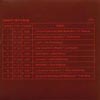 FT is for Folktales, a series of three sets of three 3"CDs that Crouton has released over recent years, each disc devoted to asingle artist of electroacoustic, experimental electronic, or impovorientation. For a finale, this full-length disc finds Tietchens'remixing all three triptychs, producing nine individual tracks, each apredictably drastic reinterpretation of its source disc. While the "+"might suggest a thickening of each track into the kind of throbbing,gray industro-ambiance that made Tietchens' name the mark of quality ontoo many lost cassette comps from decades past, his approach here ismuch more subtractive, closer to the brutally minimal, ascetictechnique begun somewhere around the more recent Menge series.The new mixes reduce nearly every track to a widely-scattered array ofsound fragments, never slipping into glitch-like impressionism, ratherworking through a pensive, reserved process of manipulation, eachcompressed or bloated bit of sound dust given ample, isolated space.Tietchens seems intent on discovering (or creating), in each piece,those moments which stare blankly back from the disc's digital sheen,which appear absent of any relation to the whole yet arrive with acryptic, almost mocking air. The artist has always kept his dark, wilysense of humor in the background of his releases (often highlighted bya E.M. Cioran aphorism or two), and this disc is no exception. The jokehere, for me at least, is that Tietchens is, more than ever, toyingwith the idea of creating music where human touch has absolutely nosignificance. The punch line comes with the realization that Tietchensis remixing others' compositions, making his job necessarily harder. Each disc in the original Folktalesseries was conceptualized around the idea of narrative, with thevarious artists essentially telling stories through sound, makingTietchens accomplishment, though idiosyncratic itself, an effectiveerasure of the others' storytelling. His reconstructions could not bemore remote; I'm even wary of using an adjective like "cold" for fearof suggesting that anything atmospheric emerges. The minisculecrunches, warped thuds, and deadened hums that become windows into theoriginal recordings do allow for glimpses into the unique flowand sonorous quality of each, however Tietchens displays a tested skillfor introducing shards of melody or motion while almost simultaneouslyenacting their disappearance. It's as if wrapped up in each stuntedswell, each vestige of previous creator and previous completion, isevidence of a fundamental insubstantiality. The artist's talents aremost remarkable when applied to the coarse saxophone and violincompositions from Bhob Rainey and Dan Warburton. Tietchens is able toretain the distinctiveness of each instrument, even allowing for a fewmelodic intervals to take shape, but he completely rejects any of thepersonality that comes with such age-old devices, turning them on anangle that emphasizes only their existence as machines, simpleconveyances of empty sound. While on paper the artist's modus operandihas all the charm of a night spent sleeping on a board, rest assuredthat Tietchens does not let the potential for enjoyment slip throughthe cracks. He understands the audacity of his place within the littlecharade he's created and takes care to make the results more appealingthan FT+'s faux-laboratory chart cover would indicate. This ismerely Tietchens as E.M. Cioran's fatalistic hero, playing theinvisible hand of time, sweeping the folklore to the hens with a smileon his face.
FT is for Folktales, a series of three sets of three 3"CDs that Crouton has released over recent years, each disc devoted to asingle artist of electroacoustic, experimental electronic, or impovorientation. For a finale, this full-length disc finds Tietchens'remixing all three triptychs, producing nine individual tracks, each apredictably drastic reinterpretation of its source disc. While the "+"might suggest a thickening of each track into the kind of throbbing,gray industro-ambiance that made Tietchens' name the mark of quality ontoo many lost cassette comps from decades past, his approach here ismuch more subtractive, closer to the brutally minimal, ascetictechnique begun somewhere around the more recent Menge series.The new mixes reduce nearly every track to a widely-scattered array ofsound fragments, never slipping into glitch-like impressionism, ratherworking through a pensive, reserved process of manipulation, eachcompressed or bloated bit of sound dust given ample, isolated space.Tietchens seems intent on discovering (or creating), in each piece,those moments which stare blankly back from the disc's digital sheen,which appear absent of any relation to the whole yet arrive with acryptic, almost mocking air. The artist has always kept his dark, wilysense of humor in the background of his releases (often highlighted bya E.M. Cioran aphorism or two), and this disc is no exception. The jokehere, for me at least, is that Tietchens is, more than ever, toyingwith the idea of creating music where human touch has absolutely nosignificance. The punch line comes with the realization that Tietchensis remixing others' compositions, making his job necessarily harder. Each disc in the original Folktalesseries was conceptualized around the idea of narrative, with thevarious artists essentially telling stories through sound, makingTietchens accomplishment, though idiosyncratic itself, an effectiveerasure of the others' storytelling. His reconstructions could not bemore remote; I'm even wary of using an adjective like "cold" for fearof suggesting that anything atmospheric emerges. The minisculecrunches, warped thuds, and deadened hums that become windows into theoriginal recordings do allow for glimpses into the unique flowand sonorous quality of each, however Tietchens displays a tested skillfor introducing shards of melody or motion while almost simultaneouslyenacting their disappearance. It's as if wrapped up in each stuntedswell, each vestige of previous creator and previous completion, isevidence of a fundamental insubstantiality. The artist's talents aremost remarkable when applied to the coarse saxophone and violincompositions from Bhob Rainey and Dan Warburton. Tietchens is able toretain the distinctiveness of each instrument, even allowing for a fewmelodic intervals to take shape, but he completely rejects any of thepersonality that comes with such age-old devices, turning them on anangle that emphasizes only their existence as machines, simpleconveyances of empty sound. While on paper the artist's modus operandihas all the charm of a night spent sleeping on a board, rest assuredthat Tietchens does not let the potential for enjoyment slip throughthe cracks. He understands the audacity of his place within the littlecharade he's created and takes care to make the results more appealingthan FT+'s faux-laboratory chart cover would indicate. This ismerely Tietchens as E.M. Cioran's fatalistic hero, playing theinvisible hand of time, sweeping the folklore to the hens with a smileon his face. 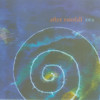 Ora was Andrew Chalk and Darren Tate with Jonathan Coleclough, Lol Coxhill, Colin Potter, and Daisuke Suzuki. Final, released in 2002, was to be this group's final album, but there were five pieces that never made it to that record because they had been lost; After Rainfall collects those five pieces and, with varying degrees of success, shuts the door on Ora.
Ora was Andrew Chalk and Darren Tate with Jonathan Coleclough, Lol Coxhill, Colin Potter, and Daisuke Suzuki. Final, released in 2002, was to be this group's final album, but there were five pieces that never made it to that record because they had been lost; After Rainfall collects those five pieces and, with varying degrees of success, shuts the door on Ora.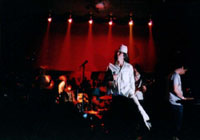 The Winter Music Conference is an annual event for Miami, during which
a cavalcade of artists, promoters, DJs, producers, and label personnel
descend on the city for two solid weeks of trade shows, artist
showcases, label parties and orgiastic, drug-addled debauchery. During
WMC season, all the club promoters attempt to trump each other by
staging unique live events at local venues featuring the dance scene's
hottest live acts and DJs. This year, I headed down to Miami for The
SoHo Lounge's two-night event hosted by the DFA and Flyer Magazine,
which promised to include live performances by !!!, The Rapture, LCD
Soundsystem, Gonzalez and Russom, The Juan Maclean and Mu. The crowd
was a typical Miami mix of hipster cokeheads, nouveau riche,
international clubbers, Latino scenesters and a brand new cadre' of Vice City-playing
indie kids clued into the non-revolution of dance-punk. The SoHo Lounge
encompasses several rooms with renowned DJs spinning simultaneous sets,
the largest room reserved for live performances.
The Winter Music Conference is an annual event for Miami, during which
a cavalcade of artists, promoters, DJs, producers, and label personnel
descend on the city for two solid weeks of trade shows, artist
showcases, label parties and orgiastic, drug-addled debauchery. During
WMC season, all the club promoters attempt to trump each other by
staging unique live events at local venues featuring the dance scene's
hottest live acts and DJs. This year, I headed down to Miami for The
SoHo Lounge's two-night event hosted by the DFA and Flyer Magazine,
which promised to include live performances by !!!, The Rapture, LCD
Soundsystem, Gonzalez and Russom, The Juan Maclean and Mu. The crowd
was a typical Miami mix of hipster cokeheads, nouveau riche,
international clubbers, Latino scenesters and a brand new cadre' of Vice City-playing
indie kids clued into the non-revolution of dance-punk. The SoHo Lounge
encompasses several rooms with renowned DJs spinning simultaneous sets,
the largest room reserved for live performances.
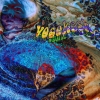 The artwork says it all here, as those unfamiliar with Vocokesh cantell right away what's inside: an obsession with psychedelic guitarrock and a twisting of genres. That it is as strange as it is but stillmakes an impact is truly an accomplishment, in my opinion, because ithas the ability to estrange people at its very core. With no vocals tospeak of, and a decided lack of structure here and there, some wouldlose interest even though the quality of the playing is of the highestcaliber. This is something not foreign to Vocokesh's mad scientistRichard Franecki considering his experiences in F/i, and this fourthalbum from his subsequent project is their most expansive, mostglorious, and finest yet. The album is a bit of a tribute to some ofFranecki's favorite cult films from Michaelangelo Antonioni andAlejandro Jodorowsky, with Vocokesh composing music that could havebeen used as the soundtrack. Even the tracks not ear-marked for thispurpose have a cinematic quality, though, where you can imagine theaction going on while the song is being played. Loud processed guitarsthat wail and screech meet with synthesizers and other electronics plusheavy drumming to produce a wall of sound that could destroy entirecities. The album comes in like a lamb, though, with the title track'sgentle acoustic strumming meeting with some distorted guitar and synthsin an almost flamenco style and a bit of minor key. But then thefifteen-minute crushing blow begins, and "Love Theme From El Topo"struts across the headphones. Loud feedback, dirty solos, kickdrum-heavy rhythms and delay make a delicious smorgasbord, even thoughit never leaves a given area, seeming to meander in the same space. Nomatter: it's still gorgeous, like a composition written by Miles Davisand performed by Hendrix on guitar. It's got that swing, baby, but Iwouldn't turn it up too loud cause the ears'll bleed. That's theblueprint, and though the melodies and chords change, there ain't a lotof variation. I still loved every minute of it, and I'm more than surethat any lover of experimental psych rock will, too.
The artwork says it all here, as those unfamiliar with Vocokesh cantell right away what's inside: an obsession with psychedelic guitarrock and a twisting of genres. That it is as strange as it is but stillmakes an impact is truly an accomplishment, in my opinion, because ithas the ability to estrange people at its very core. With no vocals tospeak of, and a decided lack of structure here and there, some wouldlose interest even though the quality of the playing is of the highestcaliber. This is something not foreign to Vocokesh's mad scientistRichard Franecki considering his experiences in F/i, and this fourthalbum from his subsequent project is their most expansive, mostglorious, and finest yet. The album is a bit of a tribute to some ofFranecki's favorite cult films from Michaelangelo Antonioni andAlejandro Jodorowsky, with Vocokesh composing music that could havebeen used as the soundtrack. Even the tracks not ear-marked for thispurpose have a cinematic quality, though, where you can imagine theaction going on while the song is being played. Loud processed guitarsthat wail and screech meet with synthesizers and other electronics plusheavy drumming to produce a wall of sound that could destroy entirecities. The album comes in like a lamb, though, with the title track'sgentle acoustic strumming meeting with some distorted guitar and synthsin an almost flamenco style and a bit of minor key. But then thefifteen-minute crushing blow begins, and "Love Theme From El Topo"struts across the headphones. Loud feedback, dirty solos, kickdrum-heavy rhythms and delay make a delicious smorgasbord, even thoughit never leaves a given area, seeming to meander in the same space. Nomatter: it's still gorgeous, like a composition written by Miles Davisand performed by Hendrix on guitar. It's got that swing, baby, but Iwouldn't turn it up too loud cause the ears'll bleed. That's theblueprint, and though the melodies and chords change, there ain't a lotof variation. I still loved every minute of it, and I'm more than surethat any lover of experimental psych rock will, too. 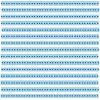 This rapturous disc is the result of a live improvisation conducted under an aqueduct in Zürich, a 40-foot-tall acoustic space that perfectly matches Momentan's simulation of poised ebb and flow. Not standard microsound fair, of minimal movement or painfully obsessive blip-bending, the piece ingests each members' contribution, Korber's threadbare guitar scratch, Müller's increasingly spartan percussive manipulations, and Steinbrüchel's grainy drone cycles, lifting all in an undulant, misty passage across the broad hollow, action that plays perfectly on the disc's punning title.
This rapturous disc is the result of a live improvisation conducted under an aqueduct in Z√ºrich, a 40-foot-tall acoustic space that perfectly matches Momentan's simulation of poised ebb and flow. Not standard microsound fair, of minimal movement or painfully obsessive blip-bending, the piece ingests each members' contribution, Korber's threadbare guitar scratch, M√ºller's increasingly spartan percussive manipulations, and Steinbr√ºchel's grainy drone cycles, lifting all in an undulant, misty passage across the broad hollow, action that plays perfectly on the disc's punning title.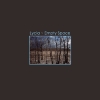 There are several disappointing things about the new Lycia album:mainly the fact that it is also their last album together, as the banddisbanded before finalizing the release. Also, it's a bit short — dueto the band implosion, too, I suppose — even though most songs areright around the five-minute mark. At nine tracks, there just seems tobe something lacking as a defining end statement for this passionateand powerful band that no doubt influenced many, including those atSilber Records, who have been so moved by Lycia that they refer to themas mentors. However, beyond the effects the end of the band had ontheir final recordings, these songs are what many have come to expectfrom this group since their first album in 1989. In fact, Empty Spacemarks a bit of a return to their birth, with original member John Fairrejoining the fold for some drum programming and the whole soundreturning to their post-punk roots. With the old, though, there's alsoa renewed love for pop structure about these songs, like Lycia wasstriving to find a perfect mix of their different albums over theyears. Instrumental tracks make up about half of the record, as well,and though it's entirely possible that they were always meant to bethat way, it still feels like vocals could sit right on top of them.Standard industrial and goth-type effects and sound qualities spill outof the speakers on every track; Mike VanPortfleet has his vocals buriedin the mix for the most part, and Tara Vanflower's otherworldly vocalscharm and disarm as ever. There are some amazing melodies on thisrecord, with an overwhelming feeling of foreboding doom. While it'sunpolished and each song has at least a two second pregap it's stillenough for this to rank up there as one of their finer works, and giventhat the album was supposed to be released four years ago, it's goodthat the songs are making their way out there to true fans now. It's ashame that there'll be no more after this from Lycia, but it's atremendous reminder of how easy it was for them to move their audience.
There are several disappointing things about the new Lycia album:mainly the fact that it is also their last album together, as the banddisbanded before finalizing the release. Also, it's a bit short — dueto the band implosion, too, I suppose — even though most songs areright around the five-minute mark. At nine tracks, there just seems tobe something lacking as a defining end statement for this passionateand powerful band that no doubt influenced many, including those atSilber Records, who have been so moved by Lycia that they refer to themas mentors. However, beyond the effects the end of the band had ontheir final recordings, these songs are what many have come to expectfrom this group since their first album in 1989. In fact, Empty Spacemarks a bit of a return to their birth, with original member John Fairrejoining the fold for some drum programming and the whole soundreturning to their post-punk roots. With the old, though, there's alsoa renewed love for pop structure about these songs, like Lycia wasstriving to find a perfect mix of their different albums over theyears. Instrumental tracks make up about half of the record, as well,and though it's entirely possible that they were always meant to bethat way, it still feels like vocals could sit right on top of them.Standard industrial and goth-type effects and sound qualities spill outof the speakers on every track; Mike VanPortfleet has his vocals buriedin the mix for the most part, and Tara Vanflower's otherworldly vocalscharm and disarm as ever. There are some amazing melodies on thisrecord, with an overwhelming feeling of foreboding doom. While it'sunpolished and each song has at least a two second pregap it's stillenough for this to rank up there as one of their finer works, and giventhat the album was supposed to be released four years ago, it's goodthat the songs are making their way out there to true fans now. It's ashame that there'll be no more after this from Lycia, but it's atremendous reminder of how easy it was for them to move their audience.
